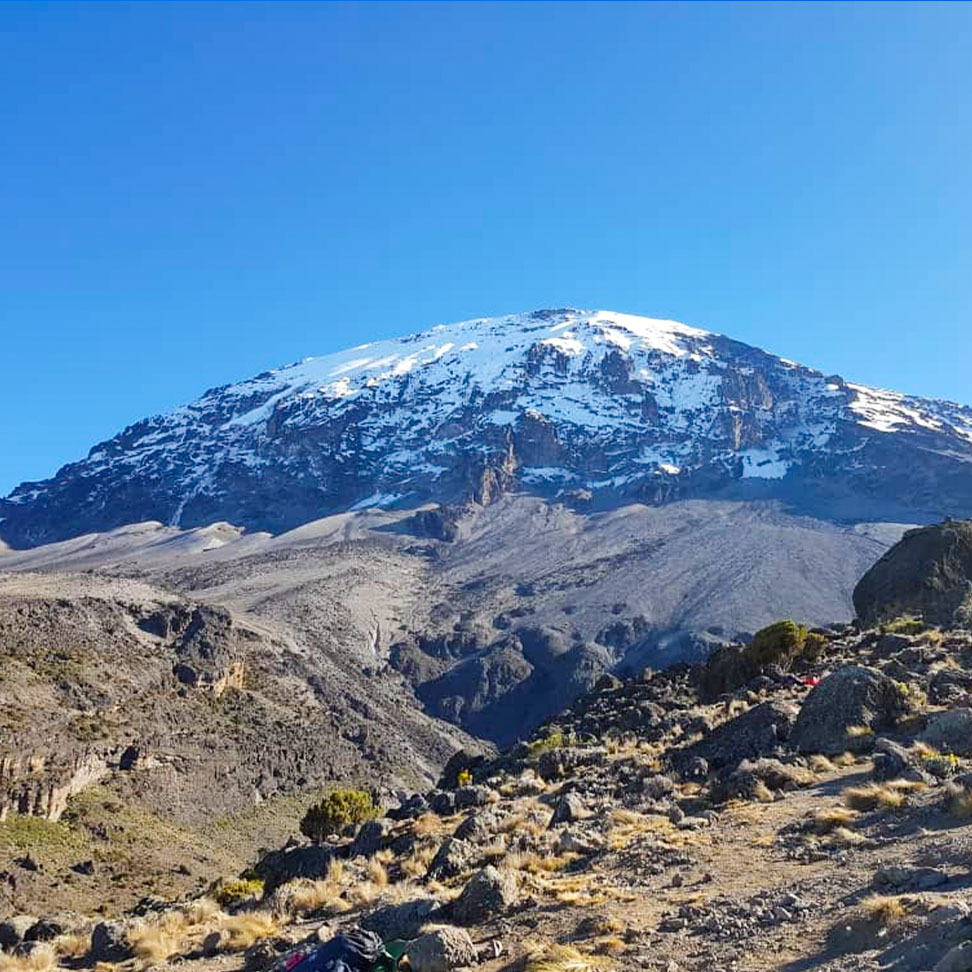MOUNT KILIMANJARO
MOUNT KILIMANJARO OVERVIEW
Mount Kilimanjaro is Africa’s highest mountain and the world’s tallest free-standing mountain. It is in the Kilimanjaro region, in the northern zone of Tanzania, East Africa. Normally, Kilimanjaro climbers stay in Moshi or Arusha towns a night before they start to climb the mountain. From these two towns, you will be transferred to the trekking starting gate which depends on the Kilimanjaro route you choose.
Most commercial planes land at Kilimanjaro International Airport, well known by acronyms KIA and JRO. The airport is located between Arusha and Kilimanjaro regions.
Some planes will land at Julius Nyerere International Airport (DAR/HTDA) which is situated in Dar es Salaam, the commercial capital of Tanzania. From Dar es salaam, you may fly to Kilimanjaro airport or take a bus to Moshi or Arusha.
Key features of Mount Kilimanjaro
Mount Kilimanjaro is a very large volcano made of ash, lava, and rock, for that reason it is referred to as a stratovolcano. It has three volcanic cone-shaped peaks called Mawenzi, Shira, and Kibo.
Of the three peaks that exist on Mount Kilimanjaro, only the Kibo peak is dormant meaning it doesn’t show any sign of eruption now, but scientists say it has the possibility of erupting again. It is estimated that the last time it erupted was 360,000 years ago. The other two peaks are extinct.
Mount Kilimanjaro is a very large volcano made of ash, lava, and rock, for that reason it is referred to as a stratovolcano. It has three volcanic cone-shaped peaks called Mawenzi, Shira, and Kibo.
Of the three peaks that exist on Mount Kilimanjaro, only the Kibo peak is dormant meaning it doesn’t show any sign of eruption now, but scientists say it has the possibility of erupting again. It is estimated that the last time it erupted was 360,000 years ago. The other two peaks are extinct.

CHOOSING A MOUNT KILIMANJARO ROUTE
Kilimanjaro routes are trails you will use as you ascend and descend the highest mountain in Africa. There are 8 official Kilimanjaro routes. However, one route is only used for descending and for delivering supplies. This one route is called the Mweka route. Routes are established by Kilimanjaro National Park and they include the starting and ending gates with well define trails. Whereas Kilimanjaro itineraries are custom-made schedules of how to approach the trek using established Kilimanjaro routes. Kilimanjaro itineraries, therefore, include a number of days to be spent on the mountain, and day-by-day activities during the trek. This is why one Kilimanjaro route can have multiple itineraries. For example, the Machame route can be approached using a 6 days itinerary, 7 days itinerary, 8 days itinerary, or even more days.
KILIMANJARO CLIMB PACKAGES
Choose a route and itinerary that suits you
Great views and adventure
7 day Machame route climb
Let’s see Kenya
on the way
7 day Rongai route climb
The slow and
steady wins
8 day Lemosho route
Not for the novice climbers
6 day Umbwe Route Climb
When the budget and time allows 7
9 day Northern circuit route
When camping is not an option
6 day Marangu route climb
Frequently Asked Questions (FAQs)
A: There are few areas where you may have cell phone reception. Our guides will let you know where you can assess signal. Our guides will have VHF ICOM radios on the mountain which provides a smooth communication from the mountain to our offices. You may want to bring your own satellite phone, they work better even on the mountains.
A: There are few areas where you may have cell phone reception. Our guides will let you know where you can assess signal. Our guides will have VHF ICOM radios on the mountain which provides a smooth communication from the mountain to our offices. You may want to bring your own satellite phone, they work better even on the mountains.
A: There are few areas where you may have cell phone reception. Our guides will let you know where you can assess signal. Our guides will have VHF ICOM radios on the mountain which provides a smooth communication from the mountain to our offices. You may want to bring your own satellite phone, they work better even on the mountains.
A: There is no power supply on the mountain. It is therefore important to ensure your electronic devices and head lamp are fully charged and bring along some extra batteries.
A:You don’t need to be an athlete or a highly trained mountaineer however you need some physical training to strengthen your muscles and get used to endurance because on the mountain you will be walking about 7 kilometers on many days. We recommend that your training for Kilimanjaro include strength training exercises and regular walks or jogging on different trails.

